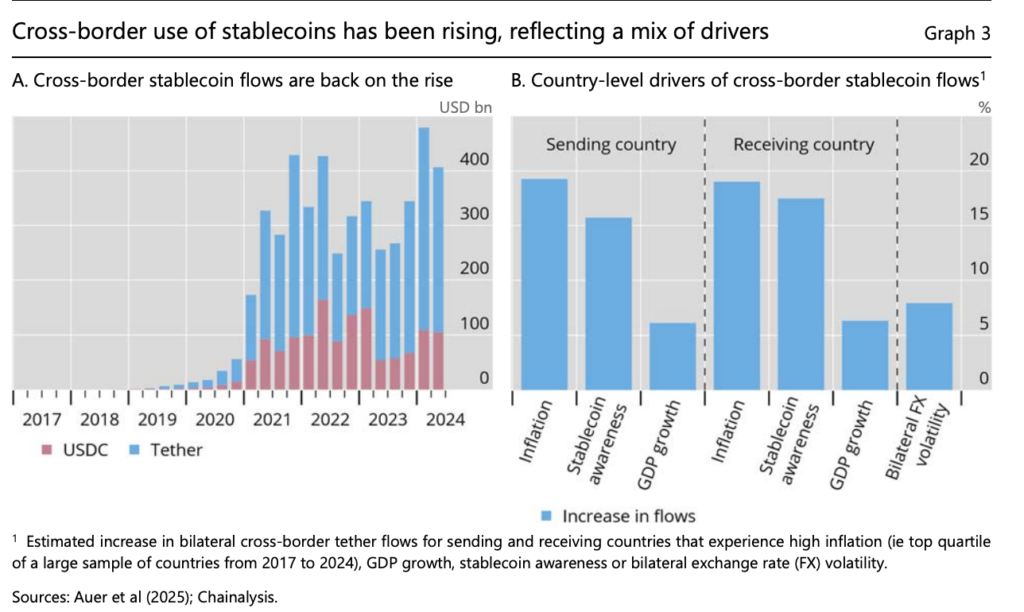Crypto
SEC acknowledges Trump’s Truth Social Bitcoin and Ethereum ETF as approval clock begins ticking
The proposed dual-crypto ETF would allocate 75% to Bitcoin and 25% to Ether, with custody handled by Crypto.com and asset management by Yorkville America Digital.

In a move that could reshape the crypto ETF landscape, the U.S. Securities and Exchange Commission (SEC) has officially acknowledged an application from Trump Media’s Truth Social for a combined Bitcoin and Ethereum exchange-traded fund (ETF)—formally starting the countdown for a decision.
Filed under the name “Truth Social Bitcoin and Ether ETF,” the proposed product would give investors exposure to both major cryptocurrencies, with an asset allocation of 75% Bitcoin and 25% Ether, according to the S-1 filing submitted on June 16.
The ETF would be listed on NYSE Arca, with Foris DAX Trust Company (operating as Crypto.com) acting as the custodian and Yorkville America Digital serving as the fund sponsor.
The SEC’s acknowledgment begins a 75-day review period, at the end of which the agency must approve or reject the application—unless an extension is granted.
Cold storage, daily valuations, and a dual-asset strategy
According to the filing, the ETF will track crypto pricing through daily NAV (net asset value) updates. The Bitcoin portion will rely on the CME CF Bitcoin Reference Rate, while Ether will be evaluated using the CME CF Ether Reference Rate, unless otherwise determined by the sponsor.
The digital assets will be stored offline in cold wallets, with separate custody accounts to protect investor funds. Private keys will be fully segregated from the custodian’s customer base—an increasingly important feature for institutional investors.
“This is the first time Truth Social has stepped directly into crypto finance,” one analyst noted. “A Trump-backed ETF filing alone will grab headlines—regardless of whether it’s approved.”
Solana ETF faces delays while SEC hints at broader movement
While the Truth Social ETF progresses, Fidelity’s spot Solana ETF has been delayed again, with the SEC opening a new comment period. Public responses are due within 21 days, and rebuttals within 35.
The Cboe BZX Exchange, which proposed the Fidelity Solana ETF in March 2025, now faces a prolonged review process.
“It was delayed as expected,” said James Seyffart, a Bloomberg ETF analyst, in a post on X.
Still, industry insiders see positive signals. Seyffart added that the SEC has reportedly asked SOL ETF issuers to re-amend filings before month’s end, suggesting that the agency is warming up to a generalized digital asset ETP framework.
“Any interaction between the SEC and issuers should be viewed positively,” Seyffart noted, but emphasized that these are not approvals yet.
The acknowledgment of Trump Media’s ETF application marks a turning point in the political-meets-crypto saga. As the SEC faces growing pressure to streamline and modernize its stance on digital assets, all eyes now turn to August, when a decision on the Truth Social ETF could set a precedent for future hybrid crypto products.
Tech
CoinFund President Slams Basel Rules for Quietly Crippling Crypto Growth
CoinFund president Chris Perkins warns that strict Basel Committee capital rules are driving banks away from crypto, creating a subtle but effective blockade.

Global banking regulators may not be banning crypto outright, but they might be silently choking its growth through rigid capital rules. That’s the warning from Chris Perkins, president of digital investment firm CoinFund, who says current banking standards are making cryptocurrencies “too costly to hold” for major financial institutions.
The Basel Committee on Banking Supervision (BCBS), which designs international banking standards, requires banks to set aside high capital reserves when dealing with crypto assets. According to Perkins, these rules drastically reduce a bank’s return on equity (ROE)—a key measure of profitability—making the economics of offering crypto services unattractive.
“It’s a different type of chokepoint,” Perkins told Cointelegraph. “It’s not direct. It’s a very nuanced way of suppressing activity by making it so expensive for the bank to do activities that they’re just like, ‘I can’t.’”
He added that banks naturally steer capital into high-ROE businesses rather than low-ROE ones, meaning that under the current Basel rules, crypto becomes a financial non-starter for traditional institutions.
Clash Between Old Finance and New Networks
This isn’t the first time Perkins has clashed with regulators. Back in April, he criticized the Bank for International Settlements (BIS)—the so-called “central bank of central banks”—for pushing know-your-customer (KYC) rules and legacy compliance standards onto decentralized finance (DeFi) protocols and stablecoins.
Perkins argued that such measures undermine the core principles of permissionless networks, where anyone can transact without centralized gatekeepers.
He further warned that the real risk to the financial system lies in the asymmetry between old and new infrastructures.

BIS Pushes CBDCs, Rejects Stablecoins
The BIS has consistently taken a hard stance against cryptocurrencies. In an April report, it claimed that digital assets could “destabilize the financial system” and even widen the global wealth gap. By June, the institution doubled down with a report titled “Stablecoin Growth: Policy Challenges and Approaches,” declaring that stablecoins fail as money and could create systemic risks.
At the same time, the BIS has been a loud advocate for central bank digital currencies (CBDCs)—a state-backed alternative to privately-issued crypto.
For crypto advocates like Perkins, this signals a coordinated effort to slow down decentralized networks while fast-tracking centralized digital currencies.
The Bigger Picture
Perkins’ remarks highlight a growing tension between traditional banking regulators and the crypto sector. While no outright bans are in place, the economic disincentives created by Basel’s capital rules could become one of the most effective “chokepoints” for the industry.
As governments and institutions push harder for CBDCs and regulated digital assets, the question remains: Will permissionless crypto survive in a world where holding it is made prohibitively expensive for the very banks that once powered global finance?
Crypto
16 Day Surge Spot Ether ETFs Add 453 Million in Inflows and Investors Say This Is Just the Beginning
Spot Ether ETFs continue their explosive streak with $453 million in inflows led by BlackRock as bullish momentum shows no signs of slowing

In an unprecedented run that has crypto bulls cheering, spot Ether ETFs have now notched their 16th consecutive day of net inflows, with Friday alone contributing a staggering $452.72 million, according to fresh data from SoSoValue. The bulk of that came from BlackRock’s iShares Ethereum Trust (ETHA), which alone pulled in $440.10 million, pushing its total assets under management to an industry-leading $10.69 billion.
The cumulative momentum of spot Ether ETFs has propelled total net assets across all U.S.-based funds to $20.66 billion, now representing 4.64% of Ethereum’s total market cap. With cumulative net inflows reaching $9.33 billion since their launch, Ether ETF adoption is clearly gathering pace—particularly among institutional investors betting big on Ethereum‘s long-term utility in DeFi, staking, and smart contracts.

With surging interest in stablecoins and tokenization, we expect strong ETH ETP inflows for a long time to come,” noted Matt Hougan, Chief Investment Officer at Bitwise, on X earlier this week.
BlackRock Dominates While Grayscale Lags
While BlackRock continues to dominate the leaderboard in the spot Ether ETF landscape, Bitwise’s ETHW trailed far behind with $9.95 million in inflows. Fidelity’s FETH also added a modest $7.30 million. On the flip side, Grayscale’s ETHE saw continued redemptions, logging a $23.49 million net outflow on the day, bringing its cumulative losses to a staggering $4.29 billion.
This divergence in performance among issuers is becoming increasingly pronounced, as investors flock toward more transparent and lower-fee funds offered by BlackRock and Fidelity, while older legacy products like Grayscale’s ETHE lose their shine.
Institutional Demand Outpacing Supply
What’s driving the surge in spot Ether ETFs? Experts say it’s a mix of improved regulatory clarity, Ethereum’s growing dominance in decentralized finance, and a belief that ETH will play a central role in future tokenized financial systems.
Matt Hougan estimates demand for Ether via ETFs and other exchange-traded products (ETPs) could reach $20 billion in the coming year, equivalent to 5.33 million ETH at current prices. That’s particularly significant when compared with Ethereum’s estimated issuance of just 0.8 million ETH in the same time frame — a mismatch that could lead to a supply squeeze.

We’re looking at a scenario where demand may outpace new ETH issuance by nearly 7X, said Hougan.
Spot Ether ETFs Outshine Bitcoin Counterparts
While spot Bitcoin ETFs also posted a rebound with $130.69 million in net inflows on Friday, they trailed Ether funds significantly. Bitcoin ETFs had seen three consecutive days of outflows earlier in the week totaling over $285 million, suggesting some rotation of investor interest toward Ethereum-based products.
Despite this, the cumulative total for spot Bitcoin ETF inflows remains higher, at $54.82 billion, with total net assets standing at $151.45 billion.
However, recent enthusiasm and performance metrics clearly favor spot Ether ETFs, especially as Ethereum’s broader use case continues to attract forward-thinking institutional players.
Will the 16-Day Streak Continue?
With daily inflows still going strong — including peak days like $726.74 million on July 16 — analysts are watching closely to see just how long this bullish streak in spot Ether ETFs can last. Since the streak began on July 2, total net inflows have more than doubled from $4.25 billion to over $9.33 billion.

And with Ethereum’s upcoming ecosystem upgrades, including developments around Layer 2 scaling, restaking, and more robust institutional-grade staking solutions, there’s reason to believe that investor appetite for spot Ether ETFs is far from satisfied.
Final Thoughts
This historic 16-day streak in spot Ether ETFs not only highlights a turning point in crypto investing but also shows how Ethereum’s evolving role in finance is driving real-world demand. While BlackRock leads the charge, the entire industry appears to be gaining ground in reshaping traditional portfolios.
If this trajectory holds, 2025 might just be the year Ethereum goes fully institutional.
Crypto
7 Big Wins as Ether ETFs Celebrate One Year with $16.6 Billion Milestone and Bullish Momentum
Ether ETFs close out their first year with strong inflows and over $16.6 billion in assets, fueling talk of staking and future crypto ETF innovations.

It’s been one year since Ether ETFs officially launched in the United States, and the celebration couldn’t have come at a better time. Marking their anniversary on July 23, the U.S.-based spot Ether ETFs have not only survived the rocky waters of the crypto market — they’ve thrived, now commanding over $16.6 billion in assets under management and locking in an impressive $8.69 billion in net inflows to date.
The U.S. Securities and Exchange Commission (SEC) gave the green light for spot Ether ETFs to trade in July 2024. Since then, major financial players like BlackRock, Fidelity, 21Shares, VanEck, Bitwise, Franklin Templeton, Invesco, and Grayscale have raced into the crypto ETF space with Ethereum-backed products.
And the market is clearly responding. Over the last 14 trading days alone, the funds saw nearly $3.9 billion in continuous inflows — a bullish streak that analysts say may just be the beginning.
“Nearly 1,000 ETFs have launched since these went live, and BlackRock’s Ether ETF leads all of them in inflows,” said Nate Geraci, president of NovaDius Wealth Management, on X. He added that six of the top seven best-ever daily inflows for Ether ETFs happened in just the past two weeks.

Ether ETFs gain serious momentum
The first anniversary was marked with a $332.2 million inflow on July 23 — the seventh-best day in the history of Ether ETFs. Just one week earlier, on July 16, the funds reached a record-breaking single-day inflow of $726.6 million.
That momentum has helped BlackRock’s iShares Ethereum Trust ETF (ETHA) pull in a massive $8.9 billion in net flows, making it the dominant force in the Ether ETF space. In contrast, Grayscale’s Ethereum Trust ETF (ETHE) has faced outflows of around $4.3 billion as its conversion from a trust to an ETF hasn’t been enough to keep investors on board.
“Investors are opting for newer ETFs with lower fees and better NAV tracking,” one analyst told Daily Global Diary. “BlackRock’s dominance just proves institutional confidence is shifting fast.”

Ether still lags behind Bitcoin ETFs
While Ether ETFs have had a stellar year, they’re still in the shadow of their older sibling: Bitcoin ETFs. Approved earlier in 2024, U.S. spot Bitcoin ETFs have raked in nearly $54.5 billion in net inflows, dwarfing Ethereum’s numbers.
Despite this, ETH is trading above $3,600, up 8% over the past 12 months, though still shy of its all-time high near $4,900 set in November 2021. The volatility hasn’t scared off long-term investors, many of whom see Ethereum’s upcoming roadmap — including staking and broader ecosystem growth — as reasons to stay bullish.
Staking could be the next big thing for Ether ETFs
What’s next for Ether ETFs? According to analysts, staking could be the major upgrade that propels the funds into a new growth phase.

The Ethereum blockchain offers rewards for those who lock up their assets to help secure the network — a process known as staking. Several ETF issuers are already pushing the SEC for permission to allow staking within their funds.
Approval could come as early as this month. If it does, it would likely spark another wave of inflows, giving investors access to yield-generating Ethereum exposure directly from regulated financial products.
In fact, the first ETF with staking was launched this month — a Solana-based fund issued by REX Shares and Osprey Funds. If Ethereum ETFs follow suit, it could be a game-changer for passive crypto investors.
-

 Entertainment1 week ago
Entertainment1 week agoAlyssa Milano removes breast implants says she finally feels free and authentic
-

 Technology News1 week ago
Technology News1 week agoChina opens Shanghai digital yuan hub to rival US dollar but here’s the bigger plan
-

 Entertainment6 days ago
Entertainment6 days agoDolly Parton delays Las Vegas concerts by nine months citing health challenges but promises unforgettable return
-

 Politics1 week ago
Politics1 week agoUS Senate to grill Coinbase executive as crypto tax fight heats up next week
-

 Entertainment6 days ago
Entertainment6 days agoZoey Deutch engaged to comedian Jimmy Tatro after 4 years of dating with romantic beach proposal
-

 Sports1 week ago
Sports1 week agoSnoop Dogg stuns AFL fans with 5 bold promises before grand final show
-

 Sports4 days ago
Sports4 days agoTottenham’s Champions League wake-up call… why Spurs must stop looking like a Europa League side
-

 Technology1 week ago
Technology1 week agoGoogle shocks crypto world with $3B deal for Cipher Mining stake but here’s the twist




























